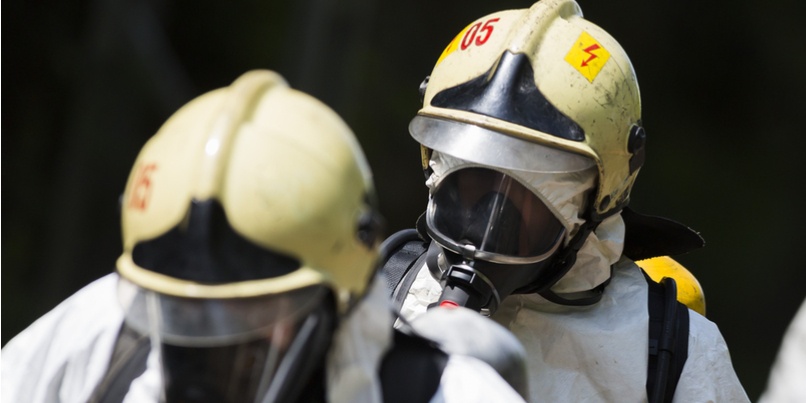
The provision of hands-on chemical warfare agent (CWA) training scenarios is essential in preparing trainees for a raft of increasingly unconventional and unpredictable threats.
The challenge for the instructor is to find ways to make that training as realistic, as impactful and as safe as possible.
CWA training that incorporates the use of simulator detector equipment can offer a practical and workable solution that allows students to experience all of the characteristics of live-agent training in real-world scenarios, in a completely controlled setting.
Simulation sources can be easily hidden in any location, emission levels can be varied to adapt the exercises - and, perhaps most importantly, there is zero risk to the trainees, the instructor or the environment.
In this blog post, we highlight ten scenarios that can be easily incorporated into your CWA training program to enhance learning outcomes.
1. A suspect package
Hide the simulation source in a luggage case, rucksack, or any item that could be used to smuggle something.
The source can be set to provide a reading only when the student gets very close to the item.
The package could be placed in a room, within a vehicle, on a train (or other mode of public transport), or it could be hidden amongst other packages.
2. A suspect vehicle
Place the simulation source in a vehicle - for example in the luggage storage compartment, or within a package hidden underneath a seat.
If placed in the luggage compartment, the difficulty of detection can be adapted by changing the level of the simulation source.
If placed under the seat, the scenario can be made more realistic by having a window slightly open and the simulation source set so a reading is obtained only at the gap in the window.
3. A contaminated vehicle
Place the simulation source under the wheel arch of a vehicle.
You can then set the instructor controller to partial decontamination so a low reading (representing residual CW agent) can be obtained.
The student can then search for contamination while you observe the process.
4. Personal decontamination
Place the source within a person’s clothing and observe as the student searches for contamination and starts the process of decontamination.
As with the contaminated vehicle scenario, it is simple to set the instructor controller so you can obtain a low reading to reflect the presence of a residual CW agent.
5. Survey / reconnaissance
Place the simulation source so open ground can be checked for emissions. The instructor can simulate non-persistent agent by reducing the reading after a set period.
6. Identifying a false positive
Set a simulation source to represent a false positive and place it in a location that would most likely cause a false positive on a real detector - for example, where cleaning chemicals may be stored in a building.
7. A simulated CW weapon / IED
Hide the simulation source within a weapon housing and task the student with obtaining a reading as they approach. The weapon can be “wrapped” to make it more difficult to detect.
To train for IED threats, the source can be placed in a required location and the instructor controller set to full response for rapid release, or partial response for slower release.
8. Room breach training
Set the simulation source so that a reading is obtained only when the door to the room is checked at the edges.
When the door is breached the reading will rise without students having to enter the room.
9. Building search training (pre-entry)
Install the simulation source within the building so emission is just detectable through an open window when the detector sensor is placed through that window.
This is a great way to train students on assessing a building prior to entry.
10. Search training
Use a standard locker room with multiple locker cupboards, such as that found in a gym.
Place a simulation source within one of the lockers so a reading can only be obtained when the student is very close. Observe their technique and feed back to them.
You can also video record the search and play it back to your students, using it as an exercise to create discussion about search technique.
CWA training scenarios have a crucial role to play in helping students gain the confidence and ability to detect and monitor a wide range of hazards.
When live-agent training simply isn't an option, simulation training that uses a combination of innovative detector equipment and safe simulation sources can provide an authentic, practical and repeatable solution.
The scenarios we mentioned above are only a fraction of the possible uses of simulator training. Argon has witnessed a much wider variety of ways in which simulators can be used for chemical warfare preparedness, which is why we have compiled a free practical guide with further case studies. Click here to download the Chemical Warfare Agent Training Experiments Using Simulators and learn the ways in which simulators can improve your training.





